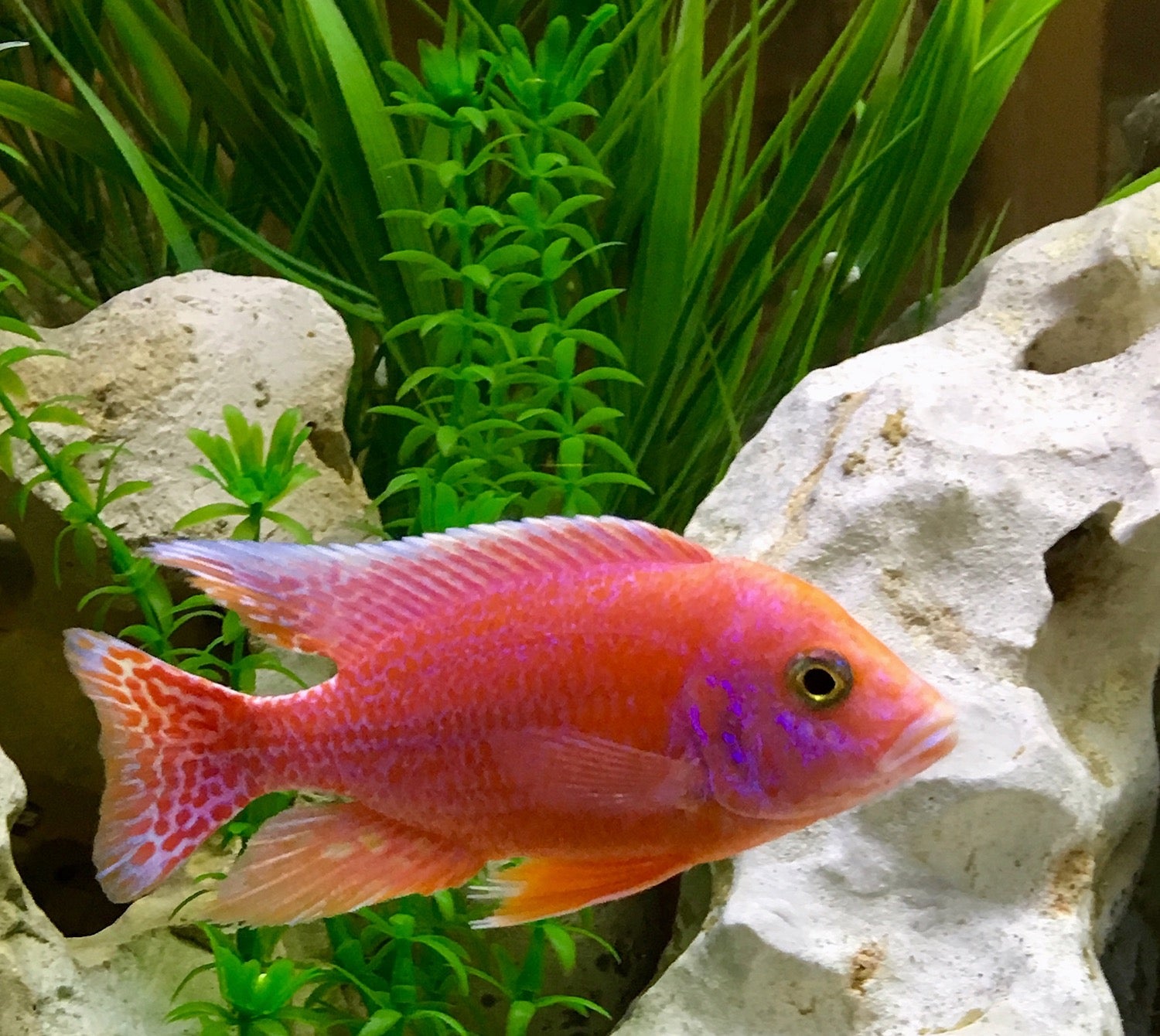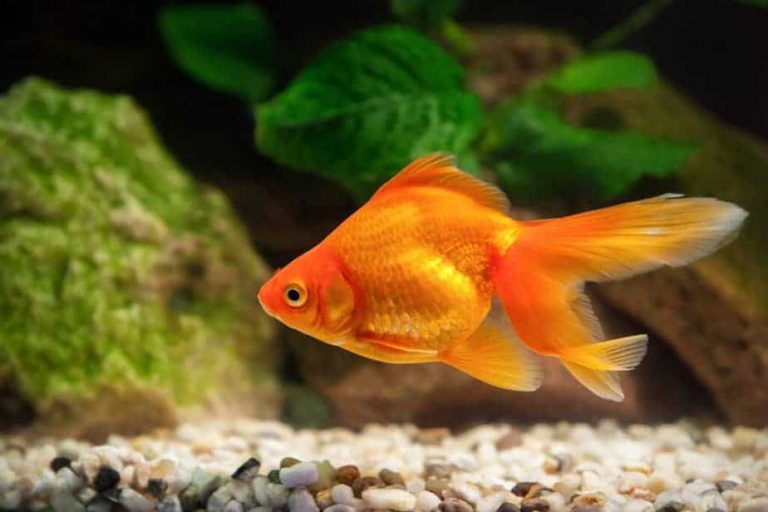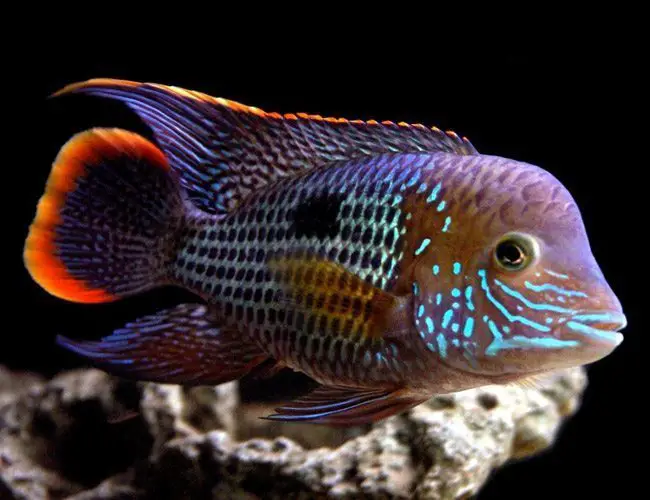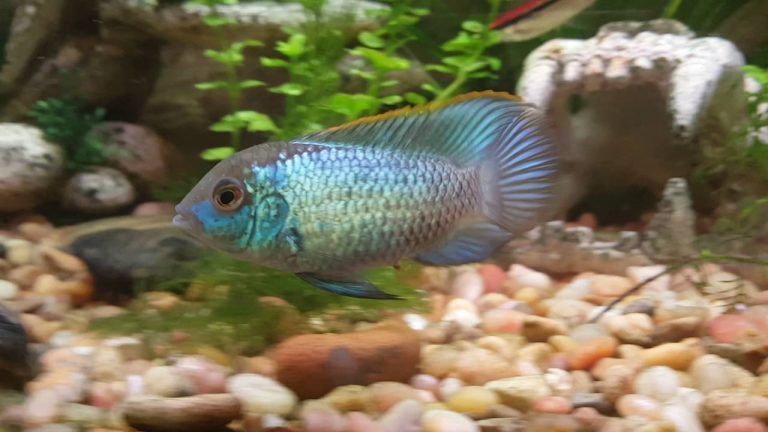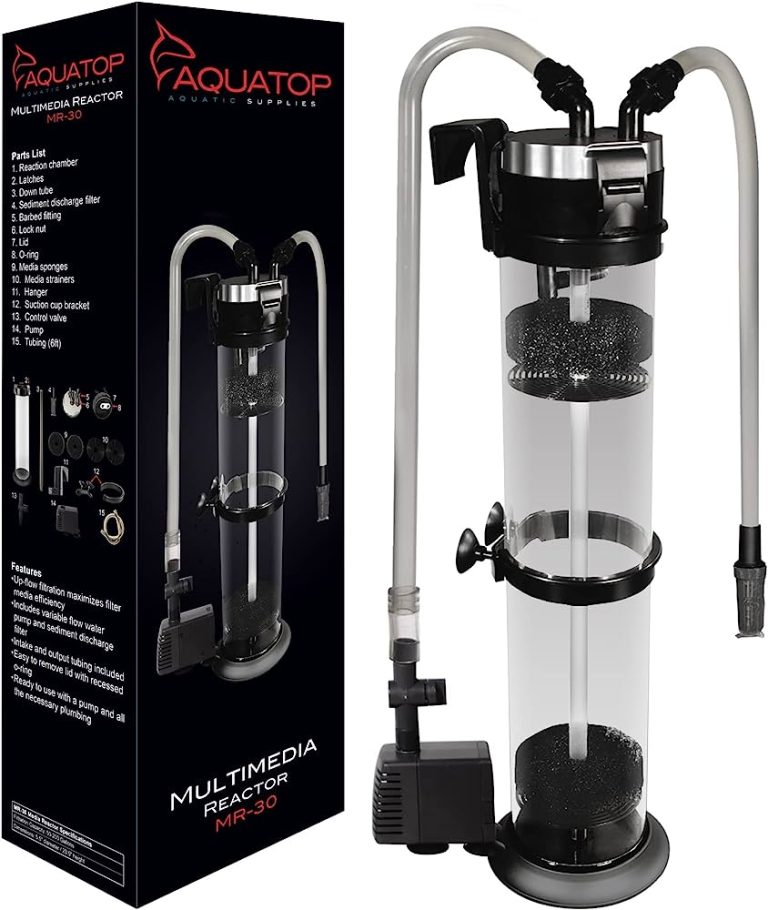Can You Keep Small Fish in a Big Aquarium: Tips and Considerations
Yes, keeping small fish in a big aquarium is possible.
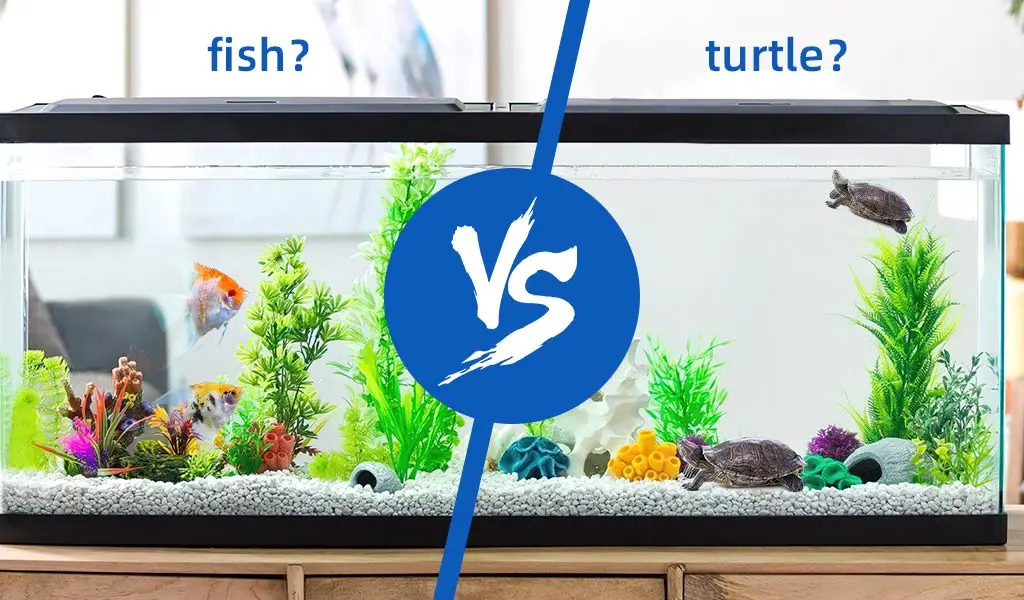
Credit: www.hygger-online.com
Understanding The Relationship Between Fish Size And Aquarium Size
Can You Keep Small Fish In A Big Aquarium
Having an aquarium in your home can be a delightful and visually captivating addition to your space. It not only adds a touch of serenity but also creates a mesmerizing environment for the fish and yourself. However, it’s crucial to strike a balance between the size of the fish you keep and the size of your aquarium.
The Importance Of Proper Space For Fish
Fish, like any other living creatures, require ample space to thrive and live comfortably. Here are key points to understand about the significance of providing proper space for your fish:
- Adequate space ensures that fish can swim freely and exercise, promoting their overall health and longevity.
- A bigger aquarium provides a more stable environment, making it easier to maintain water quality and temperature levels.
- Proper space reduces territorial disputes among fish and helps prevent stress-related illnesses.
- It creates more opportunities for fish to establish territories, interact with their environment, and explore their surroundings.
How Fish Behavior Relates To Tank Size
Understanding the relationship between fish behavior and tank size is crucial. Here are important factors to consider:
- Fish species have different activity levels and swimming patterns. Some fish are more active swimmers, while others prefer to seek shelter. Providing the appropriate tank size allows them to exhibit their natural behavior.
- Smaller tanks can hinder proper growth and development, especially for species that require more swimming space or have high activity levels.
- Overcrowding can cause aggression, territorial disputes, and stress, leading to poor health, reduced appetite, and higher susceptibility to diseases.
- The available space in the aquarium directly affects the oxygen levels, waste management, and nutrient distribution within the water, which are crucial for the overall well-being of the fish.
By understanding the importance of proper space for fish and how their behavior relates to tank size, you can create a harmonious and thriving environment for your aquatic companions. So, it’s essential to do your research and provide an aquarium that meets the specific needs of the fish species you choose to keep.
Remember, a happy and healthy fish will truly make your aquarium come alive.
Benefits Of Keeping Small Fish In A Big Aquarium
Enhancing Fish Health And Well-Being
Keeping small fish in a big aquarium offers several benefits that promote the health and well-being of your aquatic pets. Here are some key points to consider:
- Spacious environment: A large aquarium provides ample space for small fish to swim and move around freely. This helps them exercise and stay active, which is essential for their physical fitness.
- Water quality: With a bigger volume of water, it is easier to maintain stable water parameters in a large aquarium. This promotes better water quality, reducing the risk of diseases and stress among your small fish.
- Reduced aggression: In a bigger aquarium, fish have more room to establish territories and avoid conflicts. This minimizes aggression and territorial behavior, leading to a calmer and more harmonious environment for your small fish.
- Improved oxygen levels: Larger aquariums have a higher water surface area, allowing for more efficient exchange of oxygen and carbon dioxide. This ensures a well-oxygenated environment, vital for the overall health and vitality of your small fish.
Encouraging Natural Behavior And Exploration
A big aquarium encourages small fish to display their natural behavior and engage in exploration. Here are a few important points to consider:
- Sense of security: Small fish feel more secure in a larger aquarium as they have more places to hide and find shelter. This enables them to exhibit their natural behavior without feeling constantly exposed or stressed.
- Social interactions: In a bigger aquarium, small fish have more opportunities to interact with each other, exhibiting their social behavior. This can be seen in schooling fish, for example, as they swim together in synchronized movements, creating a beautiful spectacle.
- Environmental stimulation: With a larger space, you can introduce various decorations such as plants, caves, and driftwood, simulating a natural habitat for your small fish. This encourages exploration and provides mental stimulation, preventing boredom and enhancing their overall well-being.
- Space for natural reproduction: Some small fish species require ample space for successful reproduction. A big aquarium provides the necessary area for fish to lay eggs, hatch fry, and thrive in a controlled environment.
Creating A Visually Appealing Aquascape
Apart from the benefits to fish health, keeping small fish in a big aquarium allows you to create a visually stunning aquascape. Consider the following points:
- Design freedom: With more space, you have the freedom to design a captivating aquascape featuring various aquatic plants, rocks, and other decorations. This allows you to express your creativity and create an aesthetically pleasing environment for both the fish and yourself.
- Balance and proportions: A larger aquarium provides better balance and proportions for your aquascape. By carefully planning the placement of plants and decorations, you can achieve a pleasing visual composition, enhancing the overall beauty of your aquarium.
- Room for growth: Small fish often grow over time, and a big aquarium gives them ample space to develop and flourish. This ensures that your aquascape remains visually appealing as your fish size increases, without overcrowding or imbalance.
By keeping small fish in a big aquarium, you not only provide them with a healthy and stimulating environment but also create a captivating aquascape that enhances the beauty of your home or office. So, go ahead and make the most of your large aquarium by introducing a variety of small fish species and watch them thrive in their spacious underwater paradise.
Factors To Consider When Keeping Small Fish In A Big Aquarium
Having a big aquarium can be visually appealing and give you plenty of room for creativity in designing your underwater landscape. But can you keep small fish in a big aquarium? The answer is yes, but there are certain factors you need to consider to ensure the well-being of your small fish.
In this section, we will explore these factors and provide insights into how you can create a suitable environment for your little swimmers.
Tank Size And Configurations
- The size of the tank plays a crucial role in keeping small fish in a big aquarium. While it may seem counterintuitive, larger tanks can actually be more challenging to maintain for small fish because they have more space to navigate and can become stressed in such an open environment.
- Consider the dimensions of the tank as well. Long, shallow tanks are generally better suited for small fish as they mimic their natural habitat and provide more swimming space horizontally.
- Opt for a tank size that matches the needs of the specific type of small fish you want to keep. Research their growth potential and behavior to determine the appropriate tank size.
Providing Adequate Hiding Spots And Territories
- Even in a big aquarium, small fish need places to hide and establish their territories. Without adequate hiding spots, they can feel exposed and stressed.
- Incorporate a variety of plants, rocks, and caves in the tank to create hiding spots and territorial boundaries for your small fish.
- Ensure that the hiding spots are easily accessible and provide enough space for the fish to retreat and feel secure.
Ensuring Proper Filtration And Water Quality
- Proper filtration is essential in a big aquarium to maintain optimal water quality. Small fish are particularly sensitive to changes in water conditions, and it is crucial to provide them with a clean and healthy environment.
- Invest in a reliable filtration system that can efficiently remove waste, harmful chemicals, and toxins from the water.
- Regular water testing and maintenance are necessary to monitor and adjust the water parameters to meet the specific needs of your small fish.
Keeping small fish in a big aquarium is possible with the right considerations. Tank size and configurations, providing hiding spots and territories, and ensuring proper filtration and water quality are key factors to keep in mind. By understanding and addressing these factors, you can create a safe and suitable habitat for your small fish to thrive in their larger aquatic home.
Tips For Successfully Keeping Small Fish In A Big Aquarium
Are you considering keeping small fish in a big aquarium? While it may seem like a good idea, there are important factors to consider to ensure the success of your aquatic companions. From researching compatible fish species to properly introducing them to the aquarium, and monitoring and maintaining water parameters, here are some essential tips to follow:
Researching Compatible Fish Species:
- Understand the temperament and behavior of different fish species before adding them to your aquarium.
- Look for fish that have similar water temperature, ph level, and water hardness requirements.
- Consider the adult size and territorial nature of the fish to prevent overcrowding or aggressive behavior.
- Research fish compatibility charts to determine if the species you want to keep can coexist harmoniously.
Properly Introducing Fish To The Aquarium:
- Acclimate your fish to the new environment by floating the bag they come in on the aquarium surface for about 15 minutes.
- Gradually add small amounts of aquarium water to the bag every few minutes to help the fish adjust to the chemistry and temperature of the tank.
- Use a net to carefully transfer the fish to the aquarium, avoiding sudden changes in water temperature or pressure.
- Release the fish gently into the tank, allowing them to explore their new surroundings at their own pace.
Monitoring And Maintaining Water Parameters:
- Test the water regularly to ensure the parameters remain within the appropriate range for your fish species.
- Invest in a reliable water testing kit to assess ph, ammonia, nitrite, nitrate, and temperature levels.
- Perform regular water changes to maintain a clean and healthy environment for your fish.
- Keep an eye on the filtration system to ensure it is functioning optimally and efficiently removing waste.
By following these tips, you can create a suitable and safe habitat for your small fish in a big aquarium. Remember, thorough research, proper introduction, and consistent monitoring are key to the well-being and longevity of your aquatic companions. Happy fishkeeping!
Common Challenges And Solutions For Keeping Small Fish In A Big Aquarium
Can You Keep Small Fish In A Big Aquarium
Keeping small fish in a big aquarium can present a unique set of challenges. While a larger tank provides more space for the fish to swim and explore, it can also lead to issues such as aggression and overcrowding, difficulty in balancing feeding habits and nutritional needs, and the potential for disease outbreaks.
In this blog post, we will delve into these common challenges and provide solutions for maintaining a harmonious and healthy environment for your small fish.
Aggression And Overcrowding Issues
- Small fish can often fall victim to larger, more aggressive tank mates. It’s crucial to ensure compatibility among different species, as some may be territorial and prone to bullying their smaller counterparts.
- Overcrowding can also increase aggression levels, creating a stressful environment for the smaller fish. Pay attention to the recommended stocking guidelines, allowing each fish enough space to thrive.
- Solutions:
- Research the temperament and behavior patterns of different fish species before introducing them to the aquarium. Opt for peaceful and community-oriented breeds that won’t pose a threat to smaller fish.
- Provide ample hiding spots, plants, and decorations to create a sense of security for the small fish. These features can help reduce stress and aggression.
Balancing Feeding Habits And Nutritional Needs
- Small fish often have different feeding habits and nutritional requirements compared to their larger counterparts. It’s important to find the right balance to ensure their health and growth.
- Overfeeding can lead to water quality issues, as any excess food not consumed by the smaller fish will decay, negatively impacting the tank’s overall ecosystem.
- Solutions:
- Offer small, frequent meals instead of a single large feeding session. This approach mimics their natural grazing habits and prevents overconsumption.
- Invest in high-quality fish food specially formulated for small fish. These diets are designed to meet their specific nutritional needs, promoting healthy growth and vibrant colors.
Dealing With Potential Disease Outbreaks
- Even with the best care, small fish are still susceptible to diseases that can quickly spread in a larger aquarium. Detecting and treating potential outbreaks is crucial to prevent further harm to the fish.
- Common diseases in small fish include ich, fin rot, and swim bladder issues, among others. Prompt action is essential to minimize the impact on their health.
- Solutions:
- Regularly monitor water parameters such as ammonia, nitrites, and nitrates, ensuring they remain within optimal levels. Poor water quality can weaken the immune system of small fish, making them more susceptible to diseases.
- Quarantine new fish before adding them to the main tank. This practice helps prevent introducing any potential diseases to the existing fish population.
- Familiarize yourself with the symptoms of common fish diseases and have appropriate medications on hand. Prompt treatment can significantly improve the chances of recovery.
While keeping small fish in a big aquarium requires additional considerations, it can be a rewarding experience with proper care and attention. By addressing issues related to aggression and overcrowding, balancing feeding habits and nutrition, and being vigilant about potential disease outbreaks, you can create a thriving environment that allows your small fish to thrive and flourish.
Frequently Asked Questions On Can You Keep Small Fish In A Big Aquarium
Can Small Fish Be Kept In A Big Aquarium?
Yes, it is possible to keep small fish in a big aquarium as long as you provide the necessary care and appropriate environment for them.
What Are The Advantages Of Keeping Small Fish In A Big Aquarium?
Keeping small fish in a big aquarium allows them to have more space to swim and explore, promotes better water quality, and reduces aggression among fish.
Are There Any Disadvantages To Keeping Small Fish In A Big Aquarium?
One potential disadvantage is that small fish may become stressed in a large aquarium if not provided with adequate hiding spots or if they feel exposed.
How Many Small Fish Can Be Kept In A Big Aquarium?
The number of small fish that can be kept in a big aquarium depends on factors such as species, size, compatibility, and water parameters. It is best to research the specific needs of the fish you plan to keep.
Conclusion
To sum up, keeping small fish in a big aquarium is definitely possible and can be a rewarding experience for both fish enthusiasts and their finned friends. By ensuring proper filtration, appropriate tank mates, sufficient hiding spots, and a well-planned feeding schedule, you can create a harmonious and thriving aquatic environment for your small fish in a large tank.
Remember to closely monitor water parameters and conduct regular maintenance to keep your aquarium healthy and balanced. While there are some considerations to take into account, such as territoriality and aggression, these can be overcome with careful planning and research.
Ultimately, the decision to keep small fish in a big aquarium depends on your dedication and commitment to providing a suitable habitat that meets their needs. So go ahead, set up that spacious aquarium, and enjoy the beauty and tranquility of your underwater world.
